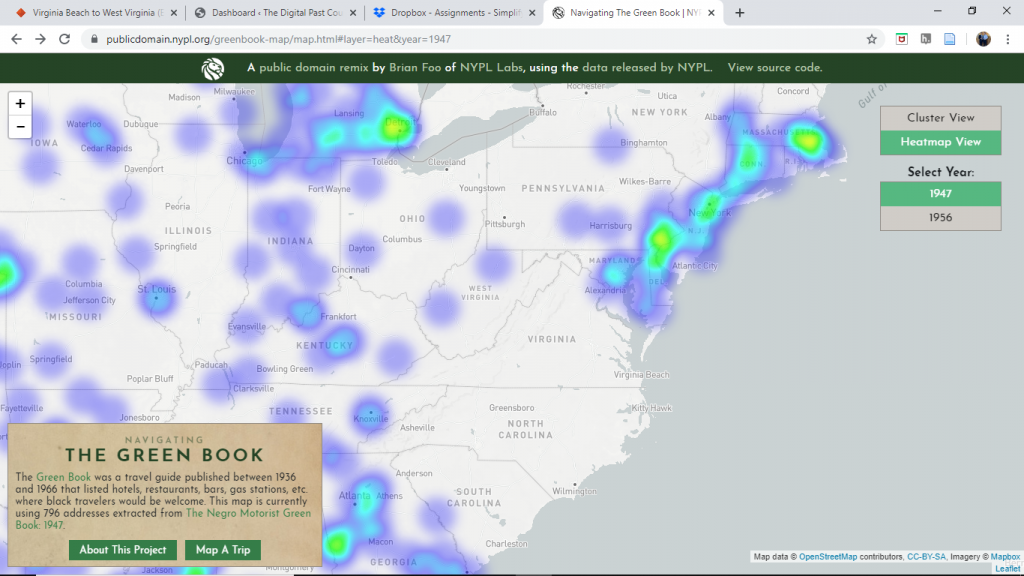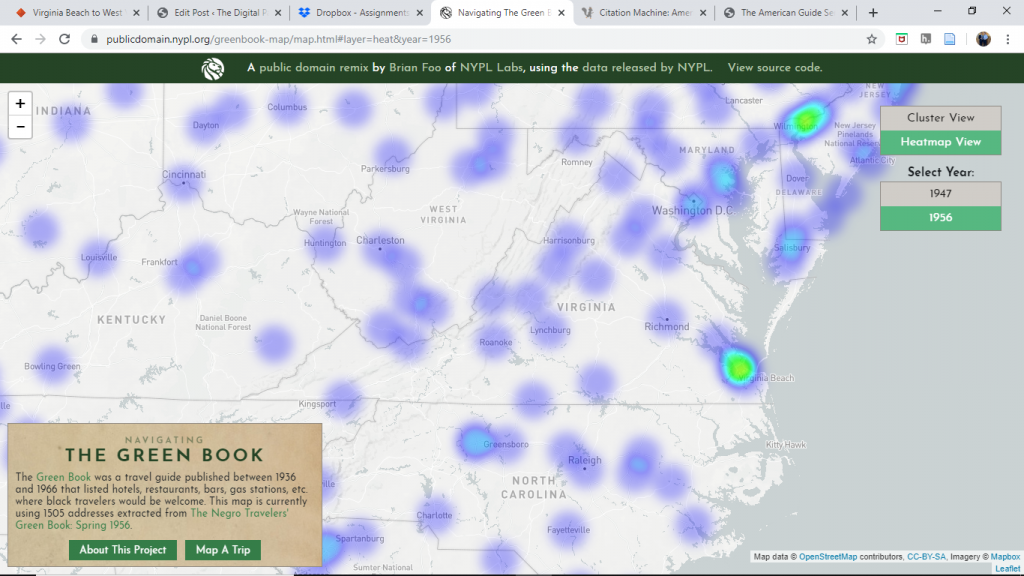https://storymap.knightlab.com/edit/?id=virginia-beach-to-west-virginia
Tourism in the 1930s was a crucial aspect in the creation of a unified American culture, different from the regionalism that is still evident today. The promotion of tourism and domestic travel allowed for cultures to clash and mix together to even create new cultures with different blends of an individual’s culture. Segregation made this harder for African American communities during this time because of the social constructs that did not allow them to go to certain areas of the country. Experiences would vary depending on the color of the skin of the traveler but also the region from where they came. Regionalism influenced travel because of the culture that the citizens carried with them but also because of the stereotypes involved with these cultures. Stereotypes may negatively impact the desire to travel to a certain region because of the connotations that region. For example, African American citizens may not desire to travel to the Southern regions because of the cultural values of racism that were so evident during the time. We see another direct example of this structural racism in the maps that W.E.B. Dubois provided during the late 1800s where he mapped the residences of African American communities and the population density of the area.1 These negative connotations may not have proved as relevant to the Caucasian travelers because they would not have seen the direct forms of racism that the African Americans did.
The Green Book shows that the trip that I planned may not have shown too much excitement for the African American population. I expected little heat in the area on the map that represents safety for the travelers however I did not expect to see the absence of safety. The 1947 heat map showed that Virginia did not provide comfortability for the African American travelers at the time. I decided to also include the heat map from the 1950s, although not needed, I believe it shows the transition that America had gone through in the span of a decade. Virginia in the 1950s reflects the transition that the country was going through with the Jim Crow laws. The separate but equal mentality was not ideal for American culture and society however the separation of race could have provided comfort ability for travelers both Caucasian and African American because they could remain within their own cultural bubbles.
In comparison the Green Book, the American Guide provided a list of more physical features of the state rather than a reflection of cultural values that can be see on the Green Book’s maps. From the American Guide exhibit: “it outlines different topics to include in each state guide such as plant and animal life, societies and associations, folk customs and folklore, transportation, natural resources, and many others with the intention of “[increasing] acquaintance with America by Americans…”2 This quote shows the lack of social awareness that went into the creation of this guide. Looking into primary sources of the time may have allowed for the American Guide to provide a more useful guide to traveling that nation similar to the way that the Green Book showed safety for African American travelers.


- Jr, V. S. A. (2017, October 20). Mapping Racism And Assessing the Success of the Digital Humanities. Retrieved from https://sarahemilybond.com/2017/10/20/mapping-racism-and-assessing-the-success-of-the-digital-humanities/.
- The American Guide Series: American Culture Defined: The American Guide Series. (n.d.). Retrieved from http://exhibits.usu.edu/exhibits/show/americanguideseries/americanguideseries.
